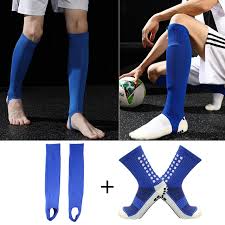
The Untold Advantage of Grip Socks in Soccer: Outmaneuver Your Opponents with Traction Technology
Grip socks in soccer might seem like a small innovation compared to the looming giants of VAR and specialized cleat designs, but they promise to lead a revolution in the art of footwork on the pitch. As synthetic turfs become more prevalent and climatic variations continue to make unexpected appearances, traction technology is not just a comfort but an essential in the game. This post dives into the untold benefits of grip socks, how they stand to improve your game, and why they might just be the unsung heroes of soccer.
Enhancing Control and Agility
It’s no secret that control and agility are the pillars of an athlete’s prowess on the soccer field. With every quick turn, sudden stop, and intricate dribble, the player’s grip on the ground determines the accuracy and success of their maneuver. Traditional soccer cleats are designed with traction in mind, but grip socks take it a step further.
soccer kickback use innovative patterns and material technology to provide an extra layer of traction between the foot and the playing surface. This can significantly improve players’ control over the ball, especially in wet or slippery conditions. The added grip allows for sharper pivots and quicker cuts, giving players the edge in close quarters or in positions where sudden changes in direction are required.
Injury Prevention and Ankle Stability
It’s not just about outshining your opponents; grip socks play a critical role in injury prevention. Soccer is a sport that requires players to push their physical limits, and with that comes the risk of twists, turns, and over-extensions. The enhanced traction of grip socks can help provide added stability to the ankle, reducing the likelihood of slips and falls, and potentially mitigating the severity of impact-related injuries.
The compression and support offered by certain grip sock designs also contribute to maintaining the player’s overall foot health. By offering a degree of arch support, these socks can help alleviate some of the stress placed on the feet during rigorous play, decreasing the risk of conditions like plantar fasciitis and general foot fatigue.
Adapting to Varied Playing Surfaces
Modern soccer is played on a multitude of surfaces, from the classical grass pitches to the more contemporary turf and futsal courts, each with its unique demands on a player’s footwear. While cleats are often optimized for specific surfaces, grip socks offer a versatile solution, designed to augment a player’s control and agility across various environments.
Grip socks provide a consistent level of traction no matter the surface, making them an invaluable accessory for training sessions, where conditions may not always reflect those of the main playing field. For youth players or those who engage in a range of soccer activities, the adaptability of grip socks makes them a practical choice that bridges the gap between specialized cleats and a reliable grip.
In conclusion, grip socks in soccer are not just a passing fad but a tangible advancement in sports technology. They offer players a competitive advantage by enhancing their control, agility, and stability, while also contributing to their overall health and performance. With these unsung heroes quietly revolutionizing how players approach the game, the future of soccer might just involve a little more traction and a lot more victory dances.